9 theories that transform two characters into the same person
Who? What?
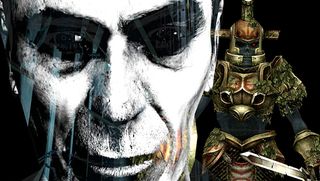
There's something to be said for a good disguise in a game. Maybe no one on this side of the controller was fooled by Amaterasu's paper mask in Okami, but Spy from Team Fortress lives off tricking players, and people are still in awe of Sheik's "true" identity to this day. New identities can shoot a hint of humor into a game, or leave players in disbelief if the creators are able to keep the gimmick convincing until the big reveal.
Games have gotten so good at this misdirection that fans have started to look for reveals before they can catch us off guard. Things start to get a little weird, though, when evidence of a connection between Character X and Character Y gets increasingly obvious... even when the creators likely didn't intend it. Here we have nine examples of fan theories that transformed one character into another by sheer fannish belief, making those characters a lot more interesting by doing it.
Gordon Freeman is the G-Man
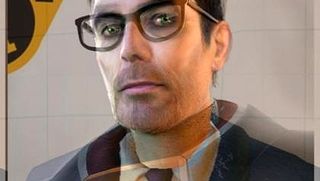
No, it's not because their names both start with "G" and end with "man." There's some other evidence too. Over the course of Half-Life 1 and 2, the G-Man makes a habit of stalking Gordon, appearing behind locked doors and on top of buildings where he really shouldn't be. He also never interacts with anyone but Gordon as far as we know, and no one seems to notice or acknowledge him. One starts to wonder what's so special about Gordon that this mysterious time-warper is keeping an eye on him, and that's when it clicks: the G-Man always appears around Gordon because he is Gordon.
Some people have suggested that the G-Man is a future version of Gordon ensuring his own existence. Others say the G-Man is a second personality that Gordon perceives as doing all these crazy things that he's doing himself. The theory starts to run out of gas during Half Life 2: Episode 2 when the G-Man does start to interact with other people (and Vortigaunts), but hey, who knows? Maybe they're just playing along for Gordons sake.
Dark Link is Hero's Shade

In Legend of Zelda: Ocarina of Time, Link wanders into an endless white void and has a battle with a shadow version of himself. In Legend of Zelda: Twilight Princess, Link appears in an endless white void and has a battle with a bizarre skeleton shadow warrior. Coincidence? I think not!
Symbolic connections aside, there are some pretty interesting parallels between the shadow incarnation Dark Link and the ghostly mentor Hero's Shade. Both are characters connected to Link in some way that have fallen from grace (who knows if Dark Link was ever virtuous) and appear in ethereal dreamscapes where he battles them to claim some sense of self-mastery. Hero's Shade also expresses regret over not being remembered as a hero, and who is going to regret that more than someone who not only lives in Link's shadow, but is his shadow? The Hyrule Historia debunks this one (though, honestly, it's pretty close), but nevertheless, there's something compelling about a shadow who just wants to be more than a shade.
Jubileus and Sheba are two halves of a whole
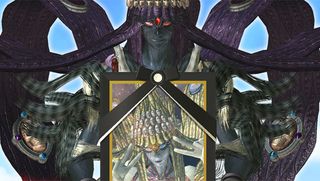
For those of you who haven't played Bayonetta, a bit of background: the game isn't just about a pretty lady with gun shoes losing her clothes. There's also magic! To be precise, magic rests in the hands of the Lumen Sages and the Umbra Witches, denizens of the worlds of light and darkness. These worlds are ruled by the light goddess Jubileus and the demon queen Sheba, deities that some fans suggest are two parts of the same godly whole.
Sign up to the GamesRadar+ Newsletter
Weekly digests, tales from the communities you love, and more
This idea works well with the game's mythology, which states that the three planes of reality used to be one, but were split an eternity ago. Since Jubileus and Sheba each hold dominion over one plane, have similar powers, and look identical but for their coloration (and, well, size), some fans suspect that when reality was divided, so was its godly ruler. Given the light-and-darkness-as-one theme the game is going for, this transformation seems pretty convincingit's only slightly weirder than anything that happened in Bayonettas predecessor, Devil May Cry.
The companion cubes are people
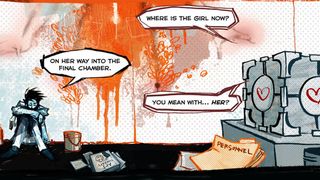
Most players probably got a chuckle out of GLaDOS' comment in Portal that the companion cube "will never threaten to stab you and, in fact, cannot speak," but didn't think much about it. When the companion cube did start talking in Portal: Lab Rat, most probably attributed it to Ratmann's untreated schizophrenia. But apparently that was too boring for The Game Theorists, who suggest that the companion cubes are actually the sentient remains of Aperture's scientists and test subjects.
What at first sounds as a case of thinking-too-hard-itis actually makes a disturbing amount of sense. For instance, Ratmann's companion cube gives shockingly good advice for being a figment of his imagination, and Aperture has a proven track record with putting human minds into an inanimate objects. Then you notice that Ratmann has pasted pictures of the companion cube over photos of Aperture employees, some with RIP scribbled beside them. At this point youll recall GLaDOS saying "We have warehouses full of [companion cubes]. Absolutely worthless," and you remember the opening scene of Portal 2 and oh, my God.
Gengar is Clefable's shadow
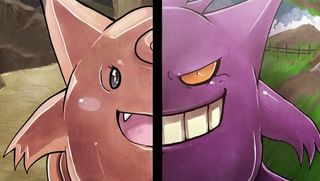
When a franchise has over 700 different magical creatures to keep track of, chances are there's going to be some overlap. A few Pikachu/Dedenne situations are understandable, and there isn't necessarily any greater connection there than a slow day for the monster designers. One could make the claim that any alleged connection between Clefable and Gengar is similarly coincidental, but this theory's a little more clever than that.
It's true that Clefable and Gengar are visually very similar, with the same pointy ears, back spikes, and general body shape. Personality-wise, they couldn't be more different: Clefable is happy-go-lucky but shy, avoiding crowds as much as possible, while the sinister Gengar seeks people out to torment them. Both have a special attachment to the moon--Clefable evolves with the Moon Stone and is supposedly drawn out of hiding on moonlit nights, while Gengar is said to be particularly mischievous under a full moon. That makes sense, since Gengar is referred to as the shadow Pokemon, and it--oh! Clearly this is the Pokemon version of Jekyll and Hyde.
Songbird is a version of Booker
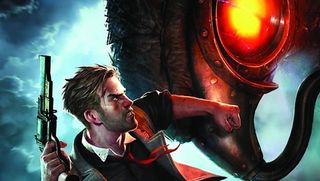
This one could turn into a minefield of spoilers if we're not careful, so forgive me for sparing a few details. In Bioshock Infinite, stuff happens with some things and whatnot, and Elizabeth has magic powers. Specifically, powers that transport things from one reality into another, including people. Songbird is Elizabeth's giant avian guardian, protecting her from anything with murderous aggression. That includes the main character, Booker. Funnily enough, Booker also protects Elizabeth pretty fiercely, preventing anyone from taking her captive including Songbird. Huh.
Notably, the game doesn't go into detail on what Songbird is--we get the sense that it was modified in some regard in connection to Elizabeth's powers, but that's it. Some fans have speculated that this theme of guardianship, the function of Elizabeth's powers, and connections between critical characters (those of you that have played the game know what I'm talking about) suggest that maybe Booker and Songbird have a stronger affiliation than meets the eye. Two sides of a coin? Perhaps.
Tidus is a version of Shuyin
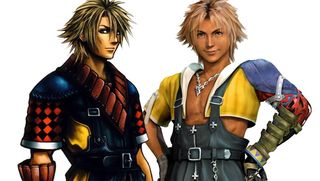
For those of you who couldn't get past the first chapter of Final Fantasy X-2, the basic idea of the game is this: Yuna finds evidence that her beloved Tidus might still be alive, and goes out to search for him. However, it turns out the guy she thought was Tidus is actually a doppelganger named Shuyin, a malevolent poltergeist set on destroying the world with a giant piano gun. (Stay with me.) Shuyin is very similar to Tidus, from appearance to attacks to backstory, though the creators were silent as to why. Some fans came up with their own idea to fill that plot hole: Shuyin is the original version of Tidus from the real Zanarkand (a sentence that makes no sense to non-FF fans).
The idea goes that the Fayth, the creators Dream Zanarkand, didn't get everything 100% right. They probably vaguely remembered Shuyin and created a close-but-not-perfect version of him in the dream, and that clone ultimately became Tidus. It's a pretty smart answer to a question that doesn't seem to have gotten much consideration in the development process--though I dont expect to see that explanation tacked on to the upcoming HD remakes.
Mono from Shadow of the Colossus is the Evil Queen from Ico
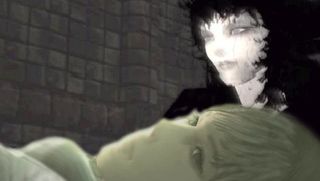
Team Ico, creators of some of the most beautiful and guilt-inducing games of all time, has said that Shadow of the Colossus is a spiritual successor to Ico. Some fans have taken it a step further and decided that Shadow is a prequel to Ico, and the central connection between the two is Mono, the girl Wander tries to save in the former title. According to these fans, Mono appears in Ico as well... as the Evil Queen.
This proposition revolves around the idea that after Mono--who was said to have a "cursed fate"--was sealed in the Forbidden Land, she was warped by feelings of isolation. Wander was the first horned child she drew life energy from, and over time she grew more ruthless and evil. The castle Ico is sent to is actually the Shrine of Worship from Shadow, and in destroying the Queen, Ico atones for the Wander's ultimate mistake, which the priest mentions at the end of Shadow, right as Mono wakes up. And hey, it's not like those games were already tragic, so why not add just a little more darkness?
Rinoa is Ultimecia

All right, truth time: Ultimecia from Final Fantasy VIII is a crappy villain. She has very little connection to the crux of the story and is, as a result, forgettable. The infamous theory that Rinoa and Ultimecia are the same person tries to change that. Subscribers say that sometime after the end of VIII, Squall is killed, leaving Rinoa alone. She starts to go crazy as a result and decides she's going to find Squall again by compressing time. When Squall's party finds her in the future, she's extended her life so long using time magic that she's forgotten who her friends are and why she compressed time at all--she just knows she really wants to.
This theory is probably one of the most contentious in the Final Fantasy fandom. Some argue that Rinoa becoming the villain destroys the game's central love-conquers-all message, while others say it improves the game by making Ultimecia a person of emotional consequence. At the rate it's going, this fight could last forever--almost as long as the Cloud/Aeris vs. Cloud/Tifa debate *shudder*.
Did we blow your mind?

If history tells us anything, it's that we just opened the floodgates to a lot of flailing, teeth-gnashing and name-calling (with some thoughtful commentary sprinkled in) as people debate the merits of these theories. Got a thought of your own? Have you found the ultimate fatal flaw in one of these theories, or know how to make its case stronger? Tell us in the comments below--just no hitting below the belt.
If you're looking for more, check out the biggest fan outrages of the generation and the best game modes and innovations, accidentally invented by players.
Former Associate Editor at GamesRadar, Ashley is now Lead Writer at Respawn working on Apex Legends. She's a lover of FPS titles, horror games, and stealth games. If you can see her, you're already dead.
Most Popular



